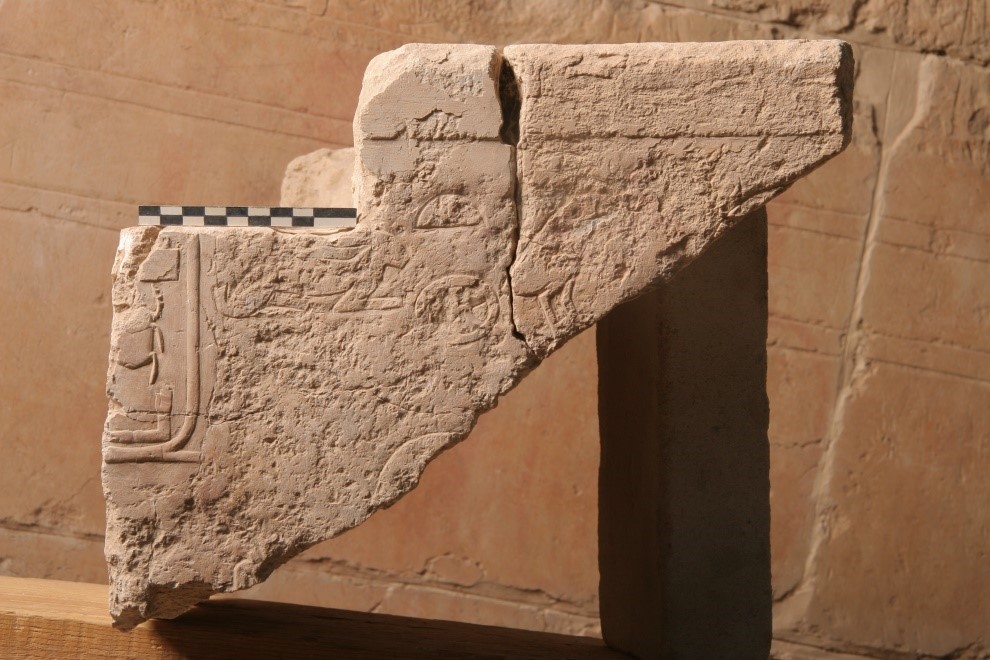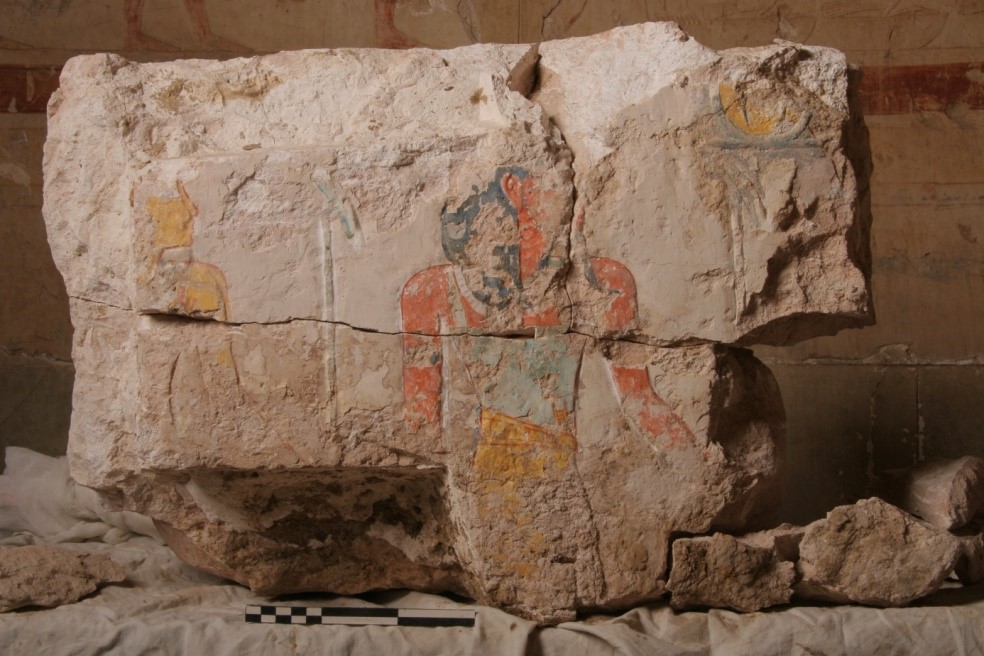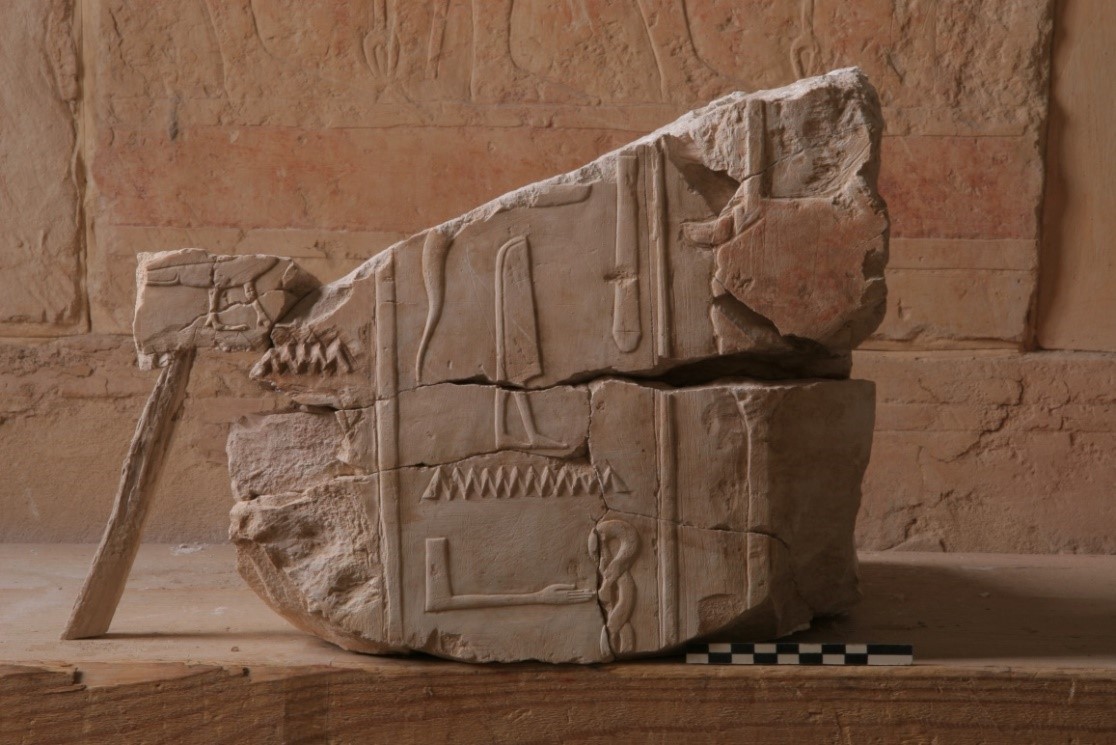News
Reconstruction of the decoration of the Vestibule of the Chapel of Hatshepsut
Main project:
Complex of the Royal Cult Reconstruction Project
Subproject:
Reconstruction of the decoration of the Vestibule of the Chapel of Hatshepsut
 The Egyptological study on the decoration of the Vestibule of the Chapel of Hatshepsut is part of a project centred on the reconstruction and publication of the Complex of the Royal Cult led by Mirosław Barwik (Institute of Archaeology, University of Warsaw). It is a continuation of work done earlier by Janusz Karkowski (IKŚiO, Polish Academy of Sciences).
The Egyptological study on the decoration of the Vestibule of the Chapel of Hatshepsut is part of a project centred on the reconstruction and publication of the Complex of the Royal Cult led by Mirosław Barwik (Institute of Archaeology, University of Warsaw). It is a continuation of work done earlier by Janusz Karkowski (IKŚiO, Polish Academy of Sciences).
The vestibule opened on the north. It was roofed and, therefore, the decoration was executed in raised relief. The main motif on the three walls was the procession of the gods. Additionally, the figures of Hatshepsut, Tuthmosis III and Hathor were depicted on the south wall. The entrance to the chapel of Hatshepsut with the enthroned Tuthmosis III in a double heb-sed pavilion was the central element of the west wall.
The original decoration from the time of Hatshepsut was obscured by changes and damages attributable to Tuthmosis III, Ekhnaton’s followers and the post-Amarna restorations. In general, it resembles the decoration of the square antechamber known from the pyramid temples of the Old and Middle Kingdom. Additionally, in the vestibule of Hatshepsut new elements appear: a kiosk on the south wall and a heb-sed scene on the west wall above the entrance.

The walls of the vestibule are only partly preserved, but the blocks and their fragments obtained through excavations contribute to the reconstruction of the decoration. The west and east walls are shared with the court of the Royal Cult Complex, which bears decoration executed in sunk relief. Egyptological studies on the decoration of the vestibule allow to reconstruct the arrangement of the architraves in the vestibule.
The aim of the project is documentation, reconstruction and publication of the decoration adorning the walls of the vestibule.

Bibliography
Karkowski, J., The Arrangement of the Architraves in the Hatshepsut’s Temple at Deir el-Bahari, EtudTrav XIII, 1983, 140-153.
Karkowski, J., Pharaoh in the Heb-Sed Robe in the Hatshepsut’s Temple at Deir el-Bahari, EtudTrav XIX, 2001, 81-112.
Kopp, E., The Motif of the Kiosk during the First Half of the 18th Dynasty, in: G. Rosati, M.C. Guidotti (eds), Proceedings of the XI International Congress of Egyptologists, Florence Egyptian Museum, Florence 23-30 August 2015, Archaeopress Egyptology 19, Oxford 2017, 313-317.
Project supervisor: Edyta Kopp
Department of Egyptology, Faculty of Oriental Studies, University of Warsaw
Project participants: Dorota Czerwik (draftsperson), Teresa Dziedzic (architect), Maciej Jawornicki (photographer), Marek Puszkarski (draftsperson), Katarzyna Szantroch (draftsperson).
Contact: edyta.kopp@uw.edu.pl
Egyptological projects I Archaeological projects I Conservation and architectural projects I Field reports I History of research



